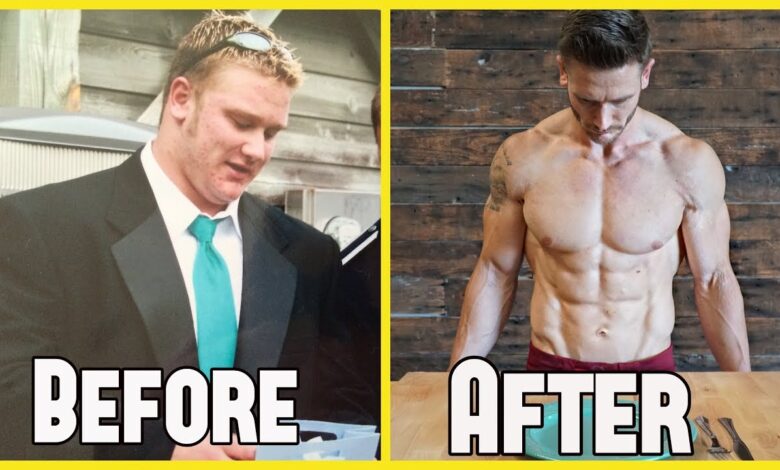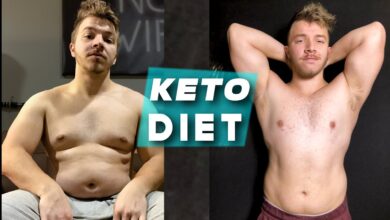
Embarking on a weight-loss journey can feel like climbing a mountain with no summit in sight. But when you hear the tales of real people who have made it to the peak — sweat, tears and all — the climb suddenly seems possible. That’s exactly what this article is about: seven real-life, high-impact keto weight loss success stories that not only show transformation, but also teach lessons you can apply. Whether you’re in the United States, Europe, or Africa (hello, Ghana!), you’ll find inspiration, actionable take-aways, and motivation to move forward.
We’ll start by understanding the underlying keto diet basics (just a bit) before diving deep into each individual story — what they faced, how they changed their habits, the hurdles they overcame, and the results they achieved. Then we’ll wrap up with take-aways, tips for sustaining your own journey, and frequently asked questions to help you navigate what comes next.
Read Also Top 10 Keto Weight Loss Transformations You Must See – Dramatic Success Stories & Lessons
1. Understanding the Keto Diet: Why It Works for Weight Loss
Before we dive into these success stories, let’s make sure we’re on the same page about the diet behind them: the ketogenic diet, or simply “keto”. It’s not magic, but when used properly it can be a powerful tool in your weight-loss kit.
What is the keto diet?
In simple terms, the keto diet is high in healthy fats, moderate in protein, and extremely low in carbohydrates. The idea: you shift your body from burning glucose (carbs) for energy to burning fat — converting it into ketone bodies in a metabolic state called ketosis. (Wikipedia)
Why might it lead to weight loss?
When you reduce carbs drastically, your insulin levels drop, your body may burn stored fat for energy, hunger often reduces (because fats and proteins are more satiating), and you lose water weight initially. For example, one article noted safe weight-loss on keto could begin with rapid water loss, and then more steady fat loss. (Women’s Health)
Things to keep in mind
- Yes, diet alone doesn’t guarantee success. Consistency, calorie balance and lifestyle matter a lot.
- The early period may bring the so-called “keto flu” (fatigue, mental fog) as your body adapts. (EatingWell)
- It may not suit everyone (pre-existing conditions, pregnancy, etc) — consult your healthcare provider.
- After initial rapid loss, weight loss tends to slow. The real goal is sustainable change.
With those caveats in mind, let’s meet the people who made it happen…
2. Success Story #1: The 150-Pound Drop That Changed Her Life
The story
Meet “Heather Burnett” (name used in a featured story) — she reportedly dropped 150 pounds through the keto diet over several years, transformed not only her body but her mindset. (Ketogenic.com)
What she faced
Heather began significantly overweight (starting weight around 278 lbs or more) and felt stuck after decades of diets that didn’t stick. The classic “I’ll try one more diet” syndrome. According to her story, this was the tipping point.
What changed
She made keto a lifestyle, not just a diet. And focused on high-quality fats, moderate protein, very low carbs, and cut back on processed foods. She combined this with movement (walking, resistance) and also worked on mindset — tracking progress, not obsessing over short-term slip-ups.
The result
Over time she lost ~150 lbs and regained confidence. Also, her health markers improved: energy levels rose, mobility improved, and what had felt like endless struggle became a sustainable path.
The takeaway for you
- Big transformations are possible when you view keto as a lifestyle, not a quick fix.
- The mindset shift (tracking, consistency, attitude) matters as much as the macros.
- Your starting point doesn’t define your endpoint — what you do every day shapes that.
3. Success Story #2: From Morbid Obesity to New Life
The story
Another story shared by the site shows someone going from morbid obesity to a new life through keto — losing 50–100 pounds or more. (Diet Doctor)
What they faced
They had tried many diets, sometimes were told surgery was the only option. The weight felt like the enemy, mobility was restricted, self-esteem low.
What changed
By committing to low-carb, high-fat, they slowly allowed their body to adjust. They reduced refined sugars and starches. And made changes in food choices—healthy fats, vegetables, quality proteins. Importantly, they also built habits around movement, sleep, stress management.
The result
Sustained weight loss, improved waistlines, better sleep, lower blood pressure and improved metabolic health. One person maintained a 70-pound loss for over five years. (Diet Doctor)
The takeaway for you
- Don’t underestimate the long game—maintaining loss is just as important as dumping the kilos.
- Habit stacking (e.g., walking, cooking at home, tracking) is what keeps it going.
- Keto doesn’t mean perfect all the time — staying consistent beats being perfect.
4. Success Story #3: The Migraines, PCOS, and Fat-Loss Victory
The story
A more niche but powerful story: someone battling migraines, perhaps PCOS, who found relief and major weight loss through keto. (Referenced in success story listings) (Ketogenic.com)
What they faced
Chronic health issues, not just weight. Migraines that disrupted life, hormonal imbalances, energy crashes, frustration after multiple diet failures. The weight was a symptom and burden.
What changed
They adopted ketogenic principles alongside addressing lifestyle: quality sleep, stress reduction, nutrient-dense meals. And also used keto not just for fat loss but for health modulation. They reduced carbs, improved fat intake, focused on healing, not just dieting.
The result
Weight came down, but more meaningfully, they felt better: fewer migraines, better hormonal balance, improved energy. The fat-loss became a by-product of healthier metabolism.
The takeaway for you
- Keto can be more than a weight-loss tool—it can support broader health issues when done thoughtfully.
- Addressing root causes (sleep, stress, hormones) boosts your results.
- Weight loss is wonderful, but more importantly: how you feel day to day.
5. Success Story #4: The 80-Pound Loss in Four Months
The story
One story mentions someone losing 50+ pounds in just a few months on keto and intermittent fasting. (Diet Doctor)
What they faced
High starting weight, frustration with slow results, often “yo-yo” dieting, perhaps a busy lifestyle with little time for fancy meal prep or workouts.
What changed
They used a strict low-carb approach, often under 20–30 net carbs per day. And combined with intermittent fasting (e.g., skipping breakfast) to create a double-effect: lower insulin, longer fat-burn windows. They chose simple, repeatable meals, avoided sugar and processed carbs, and allowed themselves walking or moderate activity.
The result
Rapid initial fat loss (though some is water weight), huge motivation from early results, then they stabilized pace and kept going.
The takeaway for you
- Early rapid loss is exciting—but don’t panic when things slow down; that’s normal.
- Simplicity wins: pick a few go-to meals that work and you’ll stick with it.
- Combining keto with fasting can accelerate results—but make sure it’s sustainable for you.
6. Success Story #5: The Woman Who Finally Felt Better in Her 70s
The story
In a compelling twist: a person in her 70s who adopted keto and said it was the best she’s ever felt. Aging doesn’t mean you can’t start fresh. (Diet Doctor)
What she faced
Long history of dieting, maybe joint pain, low energy, reduced mobility, perhaps thinking “I’m too old to change now”.
What changed
She adopted lower carbs, higher fats, moderate protein, and focused on movement appropriate for her age. And let go of the idea that ageing means giving up on vitality. She prioritized nutrient-dense foods, good sleep, moderate activity (walking, gentle strength).
The result
She lost weight, felt more agile, had more energy, improved mood and health markers. She said she had never felt better.
The takeaway for you
- It’s never too late. Whether you’re 30 or 70, the body responds when you give it better fuel + better habits.
- Focus on health and vitality, not just the number on the scale.
- Age can be an advantage: you bring perspective, patience, and determination.
7. Success Story #6: The Transformation Out of Sugar Addiction
The story
Another person’s story: someone who had a lifelong struggle with sugar addiction, carb cravings, emotional eating — and found liberation through keto. (Ketogenic.com)
What they faced
Sugar and carb binges, feeling out of control around food, emotional weight gain, guilt and repeat dieting failure. The “diet cycle” that never ended because the cravings always won.
What changed
They used keto’s hunger-suppressing effect to gain control. By limiting sugar and high-glycemic carbs, they found their cravings decreased. They also changed mindset: identifying triggers, building routines, and giving themselves permission to heal. Movement and support systems played a role.
The result
Not only did weight drop dramatically, but eating became less of a battle. Food turned from enemy to fuel. Energy improved, mood improved, self-esteem improved.
The takeaway for you
- If food feels like a battle, keto might help you calm the war zone by reducing the triggers (carbs + sugar).
- Changing your relationship with food is as important as changing your macros.
- Support (friends, group, therapist) can help if emotional eating is involved.
8. Success Story #7: The Man Who Went from 345 lbs to 213 lbs
The story
According to an article, Kevin Ozee lost 130 pounds on a ketogenic diet — going from 345 lbs down to 213 lbs. (Men’s Health)
What he faced
At such a high weight, there were serious health fears: heart disease, diabetes risk, mobility issues, self image problems. A wake-up dream made him decide: enough was enough.
What changed
He made a complete shift: removal of processed carbs, sugar, typical fast foods; adoption of nutrient dense whole foods; decent sleep; movement; strong will. He tracked progress, adjusted as needed, and realised this wasn’t just diet—it was life change.
The result
Around 130 lbs lost, improved health metrics, functioning better in daily life, improved confidence.
The takeaway for you
- Sometimes the impetus for change comes from a serious “wake-up call” (illness, dream, fear). That’s okay to acknowledge.
- When your decision is firm, the momentum builds.
- Large weight loss requires patience, support, and realistic expectations—but is absolutely possible.
9. Common Themes Across These Success Stories
Let’s pull back and look at what all these stories share — what makes them succeed. These are the patterns you can lean on.
- Commitment to change: They didn’t treat keto like a 30-day experiment, but as a way of living.
- Lowering carbs & sugar: Almost universally, the switch away from refined carbs and sugar was key.
- High-quality fats and proteins: Using better fuel (healthy fats such as avocado, olive oil, nuts; good proteins) rather than empty calories.
- Movement and lifestyle: They moved more — not always heavy gym, but walks, strength, daily activity.
- Mindset shift: Viewing this as more than weight-loss — health, vitality, and self-respect.
- Realistic expectations: Early rapid loss but then slower; celebrating non-scale victories (energy, mood, mobility).
- Sustainability: They made changes they could live with, didn’t rely on extreme measures that couldn’t continue.
10. How You Can Start Your Own Keto Success Story
Feeling inspired? Good! Let’s talk about your path. Below are steps tailored for people anywhere — Africa, US, Europe — because the principles travel across global markets.
Step 1: Get your mindset right
Ask yourself: why do I want this? What is my “why”? Write it down. Will you stay consistent when things get hard? Affirm this is not a crash diet but a lifestyle shift.
Step 2: Learn the basics of keto
Reduce net carbs to e.g. under 30 g per day (for most). Increase fats to 60-70% of your calories, proteins moderate. Eat non-starchy vegetables, good fats, healthy proteins. Avoid sugary drinks, white bread, pasta, starchy grains. The mechanism? You’re shifting to fat burning. (Women’s Health)
Step 3: Clean your environment
Remove temptations: sugary snacks, sodas, refined bread. Stock your kitchen with healthy snacks: nuts, cheese, low-carb veggies, avocado, eggs. Make restaurants work for you by asking for substitutions (e.g., instead of fries, ask for salad).
Step 4: Movement & habits
You don’t need to become a gym-junkie overnight. Start with walks, body-weight exercises, simple strength moves. Add more as you feel comfortable. Good sleep (7-9 hours) and stress management also matter.
Step 5: Track progress + adjust
Take photos, measurements, note energy and mood, not just the scale. If weight stalls, review: are carbs creeping in? Are you eating too much fat (calorie surplus) or too little (metabolism slow)? Are you being active?
Step 6: Stay consistent and patient
Remember: initial fast weight loss may slow down. That’s okay. The real win is sustainable change.
Share your progress, join a support group (in person or online), and protect yourself from diet-culture comparison traps.
11. Tailoring Keto for Africa, United States & Europe: Cultural Considerations
Because you’re reading this from a global perspective — Ghana, the US, Europe — you’ll want to adapt keto to your culture, food environment, and budget. Here are a few region-specific pointers:
Africa (including Ghana)
- Local staples such as yam, cassava, plantain are high in carbs. You’ll need to moderate or replace them with lower-carb options (e.g., cauliflower rice, zucchini, leafy greens).
- Healthy fats: avocado (locally available), groundnuts (in moderation), coconut oil, fish rich in omega-3 (tilapia, mackerel).
- Protein: chicken, fish, eggs, beans (though beans are higher in carbs) — pick wisely.
- Budget adherence: choose seasonal vegetables, shop local markets.
- Social context: family meals, cultural dishes may be carb-heavy — find ways to modify or take smaller portions of high-carb foods.
United States
- Plenty of processed foods labelled “keto-friendly”, but be cautious — they may still have hidden carbs or unhealthy ingredients.
- Eating out: many chain restaurants now offer low-carb options; still check dressings, sauces, carbs.
- Emphasize whole food over processed “keto snacks”.
Europe
- Local breads, pastries, potatoes are staples. Challenging, but you can build alternatives: e.g., low-carb breads, cauliflower mash, grilled vegetables.
- Healthy fat options: olive oil, nuts, fish.
- Cultural meals: make modifications (e.g., skip the pasta/rice side, choose salad or steamed veg) rather than simply giving up.
In all regions: adjust to local food availability, budget, family meals, and social occasions. The success stories show adaptation is possible.
12. Mistakes to Avoid on Your Keto Journey
Just as there are common success factors, there are pitfalls frequent in the stories of those who struggle. Avoid these to stay on track.
- Going ultra-extreme from day one: Cutting carbs to zero, fat to maximum, and training like an elite athlete may backfire. Start moderate and adapt.
- Ignoring nutrient density: Eating “keto-friendly” junk (zero-carb processed snacks) can sabotage health. Choose whole foods.
- Neglecting hydration and electrolytes: When carbs drop, you lose more water and electrolytes (sodium, potassium, magnesium) — this can lead to fatigue, cramps, “keto flu”.
- Obsessing over the scale: The number may stall while body composition improves. Focus on how you feel, clothes fit, energy levels.
- Permanent mindset of restriction: If the diet makes you miserable, unsustainable, or isolated, you’ll likely quit. Find balance.
- Ignoring medical checkups: Especially if you have underlying conditions (diabetes, thyroid, heart disease) — consult professional.
13. Sustaining Your Weight Loss – From Transformation to Maintenance
Losing weight is one phase. Staying at your target and enjoying your new body is another challenge entirely. Let’s explore how to make the success stories’ results last.
Transitioning phases
After you’ve lost your target weight, you don’t necessarily need to remain at ultra-low carbs forever. Many successful people relax a little and focus on “low carb” rather than “very-low carb”. It’s about maintenance, not constant deficit.
Building variety
Over time, you’ll want to incorporate a wider variety of foods. Introduce new low-carb veggies, different proteins, healthy fats. Explore your culture’s flavors — in Ghana, that could mean grilled tilapia with avocado salad; in Europe, Mediterranean-style low-carb meals. The point: keep it interesting so you don’t burn out.
Movement becomes lifestyle
When the gym is no longer novelty, your body needs movement as part of living. Walks with friends, sports, gardening, dancing — all count. The key is consistency more than intensity.
Mindset check-ins and re-goals
Every 3-6 months, ask yourself: how do I feel? How is my mobility? Social life? Emotional health? If you drift into old habits (more carbs, less movement), you’ll slowly regain. Many success stories emphasise regular check-ins.
Accepting fluctuations
Your weight will fluctuate. Maintenance is not static. The success stories show that even with plateaus or small regains, they bounced back rather than quitting. Build resilience.
14. Realistic Expectations & Setting Your Own Milestones
Let’s be frank: your journey will not be exactly like the stories above. That’s okay. What matters is setting realistic expectations and milestones.
- Week 1–4: Adaptation phase. You may see water weight drop, glucose levels stabilise, hunger reduce.
- Month 1–3: Fat loss begins; energy increases; sleep may improve.
- Month 3–12: Slower, steady fat loss; body composition improves; clothes fit better; health markers improve.
- After 12 months: Maintenance (or slow continued loss) phase. The lifestyle kicks in.
Setting milestones such as “I want to lose 20 kg in 6 months” is fine, but also include non-scale goals: “I want to walk 5 km without stopping”, “I want to feel confident in a new shirt”, “I want to reduce my waist by 10 cm”.
Celebrate those wins. The stories above didn’t just talk about the weight — they talked about energy, confidence, health, life changes.
15. Your Next Step: Taking Action Right Now
You’ve read the inspiration, understood the path, seen the pitfalls and the markers. Now let’s turn it into action.
- Write down your why now: what is your core motivation?
- Choose your top 3 habits to start this week: e.g., “No sugar drinks”, “20 g net carbs or less for 3 meals/day”, “Walk 30 minutes daily”.
- Plan your meals for the next 2-3 days around keto-friendly foods you know you’ll enjoy and can afford.
- Track one metric: energy levels, hunger scale, or waist measurement (other than scale).
- Share your intention with someone (friend, family, online group) for support.
Remember: the success stories you read weren’t overnight miracles. They were consistent changes compounded over time. You’re not alone. Your geography, your culture, your lifestyle may differ, but the fundamentals apply globally. The diet, the habits, the mindset — all resonate whether you’re in Accra, New York, London, or Berlin.
Conclusion
We’ve walked through seven powerful success stories of the ketogenic diet: from someone in her 70s feeling better than ever, to a man who lost 130 pounds, to people overcoming sugar addiction, health challenges like PCOS or migraines. What ties them together? Commitment, smart eating, movement, good habits, mindset, and consistency.
Maybe you’re asking: “Can I really do this?” The answer: yes. But remember—it’s not about perfection, it’s about progress. Choose the path that you can live with, but choose action. Eat better, move more, sleep well, reduce sugar and carbs, stock your environment for success, and track not just the number on the scale but how you feel.
In time, you’ll create your own story—one worth telling. Perhaps you’ll one day inspire someone else. Start today.
Read Also Mastering Keto: 8 Proven Tips to Break Through Keto Weight Loss Barriers
Frequently Asked Questions
Q1: How quickly can I expect results on keto?
A: It varies widely. Many people see initial water weight loss in the first 1-2 weeks, then fat loss may start. Safe weight-loss is around 0.5-1 kg per week after the initial phase. Remember: rate slows, and that’s okay. (Women’s Health)
Q2: Can I follow keto if I live in Ghana/Africa with local food staples like yam or cassava?
A: Yes—though you’ll need to modify your carbohydrate intake. Consider replacing high‐carb staples with lower-carb alternatives (cauliflower rice, more green vegetables), and still include healthy fats and proteins. Adjust to your culture and budget to make it sustainable.
Q3: Is exercise mandatory on keto for weight-loss?
A: It’s not mandatory, but highly beneficial. Many weight-loss happens through diet, but movement helps preserve muscle, boost metabolism, support health and improve mood. Even walking 30 minutes daily makes a difference.
Q4: What happens when weight loss slows down or plateaus?
A: Plateaus are normal. To break through: review your carb intake (are you sneaking in hidden carbs/sugars?), check your calorie balance (are you still in a deficit?), ensure quality sleep and manage stress, maybe adjust your macros or increase movement. Patience and consistency win.
Q5: Can I stay on keto forever? Is it safe long‐term?
A: Many people transition from very-low carb to a moderate low-carb approach over time for maintenance. The key is sustainability. If the strict version feels too restrictive and unsustainable, adjust it. Long-term safety depends on good nutrient quality, regular health check-ups and listening to your body.





One Comment